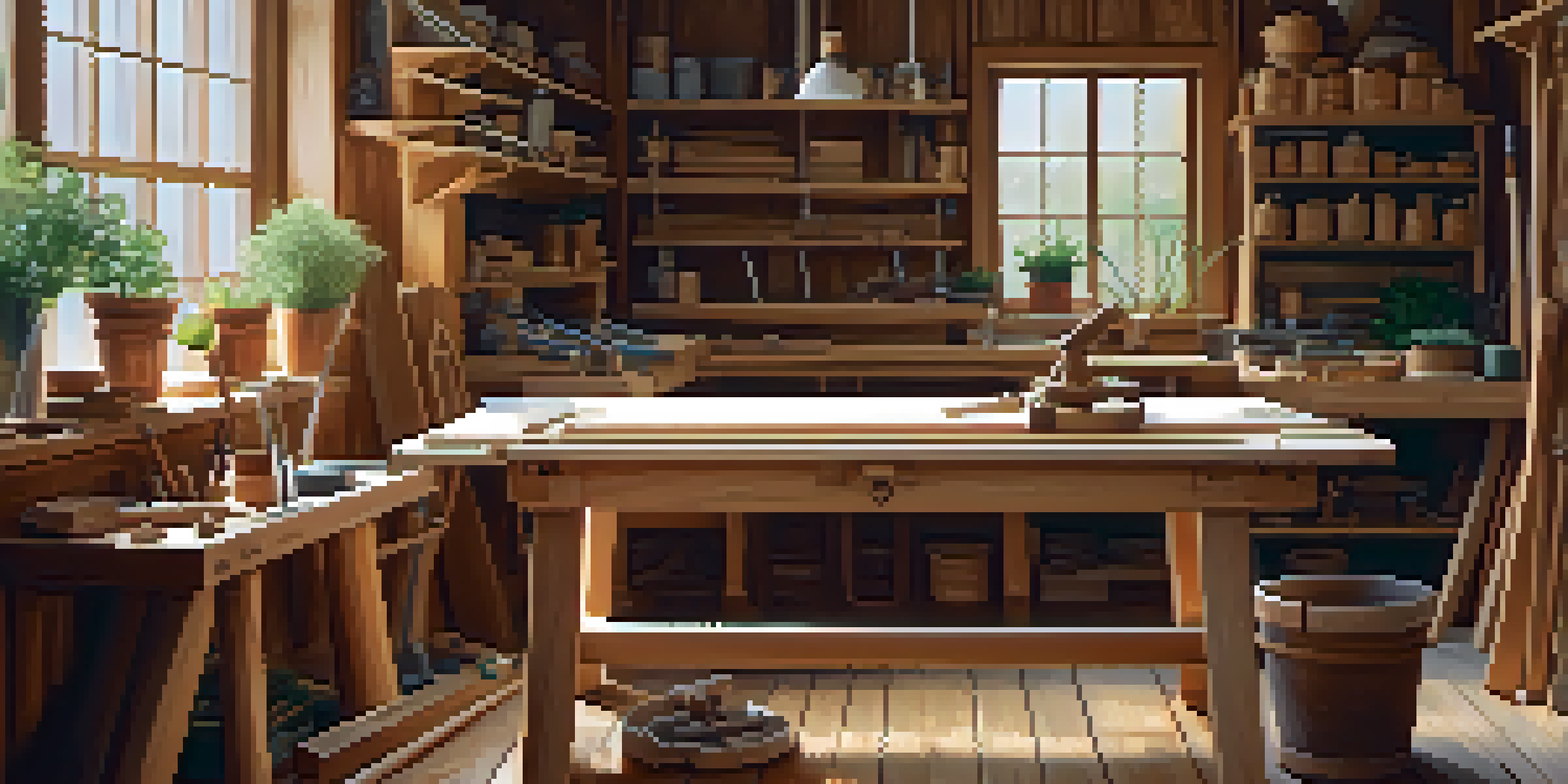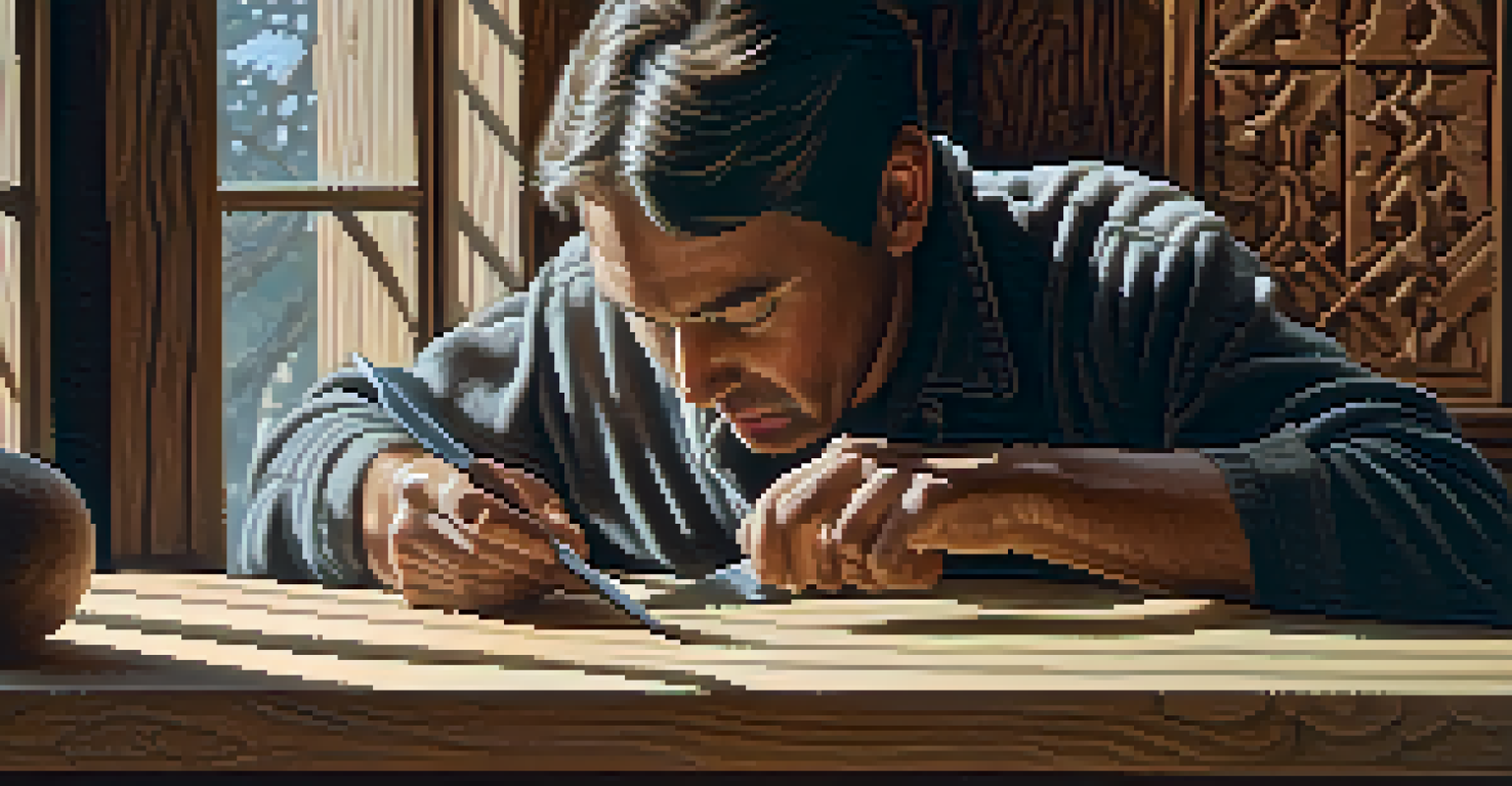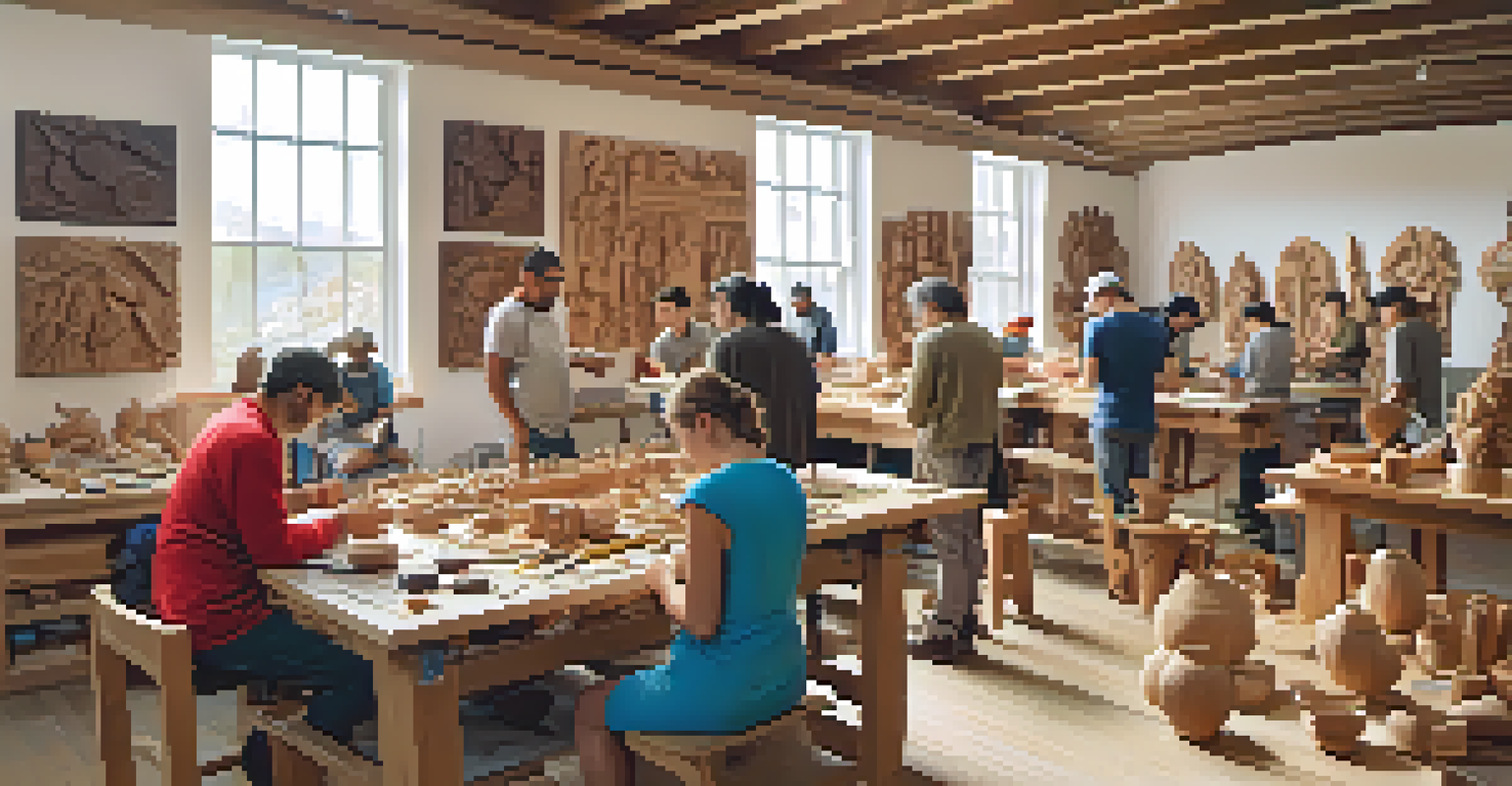Carving as Therapy: Healing Through Artistic Expression

Understanding Carving: An Introduction to the Art Form
Carving is more than just shaping wood or stone; it's a form of artistic expression that can have profound therapeutic benefits. At its core, carving involves taking a solid piece of material and transforming it into something beautiful or meaningful. This process allows individuals to channel their emotions and thoughts into a tangible form, providing a unique outlet for creativity.
Art enables us to find ourselves and lose ourselves at the same time.
Many people find that engaging in carving can help them manage stress, anxiety, or emotional pain. As the knife glides through the material, it can mirror the act of releasing pent-up feelings or frustrations. It's a meditative process that encourages mindfulness, allowing the carver to focus on the present moment.
Moreover, carving can be a form of storytelling. Each piece created can hold personal significance, serving as a reflection of the artist’s journey. Through this art form, individuals can explore their identity and experiences in a safe and constructive manner.
The Therapeutic Benefits of Artistic Expression
Artistic expression, including carving, has been shown to have numerous psychological benefits. Engaging in creative activities can stimulate the release of dopamine, a neurotransmitter associated with pleasure and reward. This natural 'feel-good' chemical can boost mood and alleviate feelings of depression.

Additionally, carving can serve as a form of emotional release. For many, the act of creating something with their hands allows them to work through complex emotions that may be difficult to articulate verbally. It provides a physical outlet for feelings, which can lead to a sense of relief and clarity.
Carving as a Therapeutic Outlet
Engaging in carving allows individuals to express emotions and manage stress through the creative process.
In group settings, carving can also foster connection and community. Sharing the experience with others can create bonds, reduce feelings of isolation, and encourage collaborative healing. This social aspect can amplify the therapeutic effects, allowing participants to support one another through their artistic journeys.
Mindfulness and Carving: A Meditative Practice
Mindfulness is about being present and fully engaged in the moment, and carving offers a perfect avenue for this practice. As carvers focus on each cut and detail, they often enter a state of flow, where time seems to stand still. This immersion helps quiet the mind and reduces distractions, making it an effective tool for managing anxiety.
The creation of something new is not accomplished by the intellect but by the play instinct acting from inner necessity.
The repetitive motions involved in carving can also be soothing, similar to the calming effects of knitting or gardening. As the carver connects with the material, they can experience a profound sense of satisfaction and accomplishment, which contributes to their overall well-being.
This meditative aspect of carving can be particularly beneficial for those facing life’s challenges. By shifting focus from worries to the creative process, individuals can cultivate a more positive mindset and develop coping strategies that extend beyond their time with the carving tools.
Building Skills and Confidence Through Carving
As individuals engage in carving, they not only express their emotions but also develop new skills. Each project presents unique challenges that require problem-solving and critical thinking. Overcoming these hurdles can lead to a sense of achievement and pride, bolstering self-esteem.
Learning to carve can also enhance fine motor skills and hand-eye coordination. These practical benefits can translate into improved dexterity in daily activities, contributing to a greater sense of autonomy and capability.
Mindfulness Through Carving
The meditative nature of carving helps practitioners focus on the present, reducing anxiety and enhancing well-being.
Moreover, the progression from novice to skilled carver is often marked by a journey of personal growth. As individuals see their skills improve, they may also find that their confidence spills over into other areas of their lives, encouraging them to take on new challenges outside of the studio.
Creating a Safe Space for Expression
A key element of using carving as therapy is the creation of a safe space where individuals can express themselves freely. This environment should be supportive and non-judgmental, allowing participants to explore their creativity without fear of criticism. In such a setting, individuals are more likely to open up and connect with their emotions.
Whether through a formal workshop or a casual gathering with friends, the atmosphere can significantly impact the therapeutic benefits of carving. Encouraging open dialogue about personal experiences can enhance the healing process, allowing for shared insights and collective support.
The physical space can also be adapted to foster creativity—bright lighting, comfortable seating, and inspiring materials can all contribute to a positive experience. When individuals feel safe and inspired, they’re more likely to engage deeply with their artistic practice.
Case Studies: Real-Life Experiences with Carving Therapy
Numerous individuals have shared transformative experiences stemming from their carving practice. For instance, a veteran coping with PTSD found solace in carving wooden sculptures, describing how the repetitive motions helped him process trauma and restore a sense of calm. His story highlights how carving can serve as a therapeutic outlet for those grappling with significant emotional burdens.
Another example includes a young adult navigating the challenges of depression. Through carving, she discovered a way to express her feelings and channel her creativity. As she shaped her pieces, she felt a sense of control and purpose that had been lacking in her life, illustrating the power of creative expression in therapeutic settings.
Building Skills and Confidence
As individuals improve their carving skills, they also experience personal growth and increased self-esteem.
These personal accounts underscore the potential of carving as a healing modality. By sharing their journeys with carving, individuals not only find healing for themselves but also inspire others to explore the therapeutic benefits of artistic expression.
Getting Started: Tips for Carving as Therapy
If you're interested in exploring carving as a therapeutic practice, start by gathering some basic tools and materials. You don’t need to invest in expensive equipment; a simple carving knife and a soft piece of wood can be enough to get started. As you become more comfortable, you can gradually expand your toolkit.
Set aside time in a quiet, comfortable space where you can focus solely on your carving. It’s important to approach this practice without pressure; allow yourself to create intuitively and without judgment. Remember, the goal is not to produce a perfect piece but to engage in the process of creation.

Lastly, consider joining a carving group or taking a class. Learning alongside others can provide motivation and support, making the journey more enjoyable. Engaging with a community of fellow carvers can enrich your experience and deepen your understanding of the therapeutic benefits of this art form.